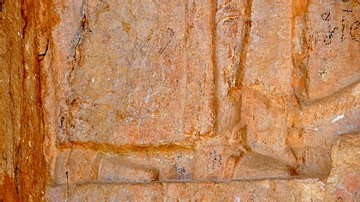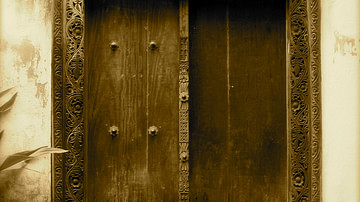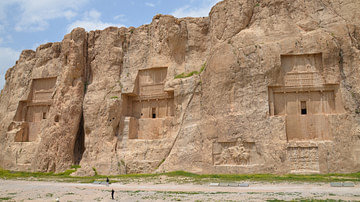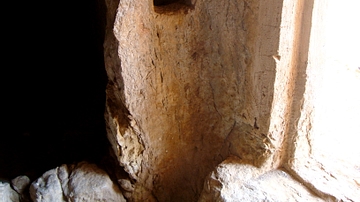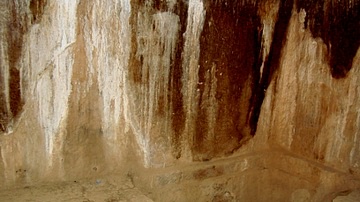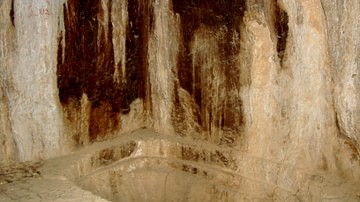Illustration
The square doorway at the façade of the rock-cut tombs of Ashkawt-i Qizqapan (Kurdish: The Cave of the Ravisher or the Cave of the Raped/Abducted Girl) leading to the central burial chamber (shown). The square entrance to the central chamber was probably sealed by a door; no trace of this door is present. This rectangular coffin was carved into the rocky floor, which was hollowed out. Probably the coffin was covered by a stone lid at the upper rim. The length of the coffin is short for an outstretched adult body; therefore, this type of coffin appears to be an “astodana”. This central chamber leads, through square doorways, to the right and left (shown) burial chambers. Median-Achaemenid Period, 600-330 BCE. Near Zarzi village and the Palaeolithic cave of Zarzi, Chemi Rezan Valley, Sulaymaniyah Governorate, Iraqi Kurdistan.
About the Author
Cite This Work
APA Style
Amin, O. S. M. (2018, January 23). Doorway, Rock-Cut Tombs of Qizqapan. World History Encyclopedia. Retrieved from https://www.worldhistory.org/image/7999/doorway-rock-cut-tombs-of-qizqapan/
Chicago Style
Amin, Osama Shukir Muhammed. "Doorway, Rock-Cut Tombs of Qizqapan." World History Encyclopedia. Last modified January 23, 2018. https://www.worldhistory.org/image/7999/doorway-rock-cut-tombs-of-qizqapan/.
MLA Style
Amin, Osama Shukir Muhammed. "Doorway, Rock-Cut Tombs of Qizqapan." World History Encyclopedia. World History Encyclopedia, 23 Jan 2018, https://www.worldhistory.org/image/7999/doorway-rock-cut-tombs-of-qizqapan/. Web. 23 Apr 2025.



